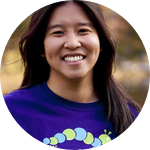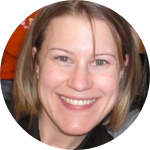About This Project
The massive and rapid accumulation of our plastic and rubber waste is a problem that we cannot afford to ignore. Since certain types of plastic and rubber are held together by the same chemical bonds that are found in natural plant polymers, we are investigating the ability of fungi that live inside plants to degrade synthetic plastics and rubbers.
Ask the Scientists
Join The DiscussionWhat is the context of this research?
Research on synthetic polymer biodegradation has been steadily growing over the past forty years. Several bacteria and fungi have been identified that produce enzymes capable of plastic and rubber degradation in various laboratory conditions. However, this field is still in its infancy and much work needs to be done to determine the viability of plastic and rubber biodegradation.
Several plastics and rubbers contain the same chemical bonds that are found in natural plant polymers. Therefore, we are specifically targeting endophytes, organisms that grow symbiotically inside plants, in order to harness the endophytes’ ability to degrade natural plant polymers for the degradation of synthetic plastics and rubbers.
Our group has previously identified degradation of the plastic polyester polyurethane by the endophytic fungus Pestalotiopsis microspora. This fungus secretes a small enzyme that is responsible for plastic degradation. Going forward, our project goals are to:
1) Characterize enzymatic degradation by Pestalotiopsis microspora
- Isolate and characterize enzymatic degradation
- Compare enzyme efficiency to other polyester-degrading enzymes
- Evaluate degradation of solid polyester polyurethane and other plastics
- Evaluate degradation of plastic by P. microspora in simulated landfill conditions (collaboration)
2) Screen for new plastic- and rubber- degrading fungi
- Screen fungi collections for degradation of different synthetic polymers
- For promising candidates, sequence the genomes and look for possible novel plastic- or rubber-degrading genes
- Analyze candidates using gel permeation chromatography (molecular weight changes) and scanning electron microscopy (visual degradation)
What is the significance of this project?
Plastics and rubbers are examples of synthetic (or man-made) polymers that have become an indispensable part of our lives. From our disposable packaging to our grocery bags, from our water bottles to our car tires, we heavily rely on synthetic polymers on a daily basis. These materials are cheap to manufacture, versatile, and resilient -- which also means that they are produced in massive quantities and can last in the environment for hundreds of years. Given that these extremely durable materials are often used for single-use disposable applications, it’s important to think about what happens to plastics and rubbers after disposal.
While we have seen an enormous boom in synthetic polymer production (over 250 million tons of plastic are produced every year!); our methods of treating these materials after disposal have not been able to keep up. Recycling has helped reduce the amount of plastic waste, however only 15% of global plastic is successfully recycled. Additionally, Incineration, another common method of disposal, can form and release toxic chemicals into the environment. Therefore, we are investigating alternative (or complementary) methods of dealing with our plastic and rubber waste.
What are the goals of the project?
All funds raised will directly be applied to furthering the stated project goals of characterizing the biodegradation of plastic by Pestalotiopsis microspora and screening for new plastic- and rubber-degrading enzymes.
A portion of the funds will be used to buy consumable lab supplies, which are necessary for the growth and maintenance of the fungal cultures, enzymatic characterization and materials for additional plastic and rubber screens. I already have access to the necessary equipment for polymer analysis; however, many instruments have fees associated with use and/or several accessory pieces of equipment or consumables need to be bought separately. I will apply the funds towards using equipment such as scanning electron microscopy and gel permeation chromatography.
Additionally, in the Spring I will be going to the Amazon Rainforest as a Teaching Fellow for Professor Scott Strobel's Rainforest Expedition and Laboratory class (all expenses paid; no donated funds will be used for travel). During this time, I will specifically collect fungi that may produce abundant lignocellulolytic enzymes to use in my plastic and rubber degradation screens. If promising candidates arise from these screens, I will use funds to sequence the genomes of the fungi to identify the responsible gene(s) and to synthesize genes that code for putative plastic or rubber degrading enzymes for future studies.
Budget
The proposed budget will be used to purchase laboratory supplies, equipment time, accessory equipment, and bioinformatic analyses for the purpose of:
1) Characterizing the enzyme from Pestalotiopsis microspora that is responsible for polyester polyurethane degradation and comparing the characteristics of this enzyme to other polyester-degrading enzymes
2) Assessing degradation of solid polyester polyurethane (as well as other types of plastic) and working in collaboration with a biodegradation testing facility to evaluate degradation of plastic by P. microspora in simulated landfill conditions
3) Screening endophyte collections for degradation of different plastics and rubbers and confirming degradation using gel permeation chromatography and scanning electron microscopy
4) Sequencing the genomes of potential candidates and looking for possible novel genes that code for plastic- or rubber-degrading enzymes.
Meet the Team
Affiliates
Team Bio
Michelle Legaspi, Ph.D. Candidate, Yale UniversityI am driven by my desire to appreciate and learn from our natural environment in order to help integrate more sustainable systems into our lifestyles. I received my B.S. in Chemistry from the University of Florida. As an undergraduate, I spent 3 years working for the US Department of Agriculture analyzing chemically-mediated signaling interactions between plants and caterpillars in order to better understand plant defense mechanisms and increase agricultural crop yields without the use of harmful pesticides. I became increasingly interested in environmental research after studying abroad in New Zealand and Fiji learning about human impact on the environment. After graduation, I worked with the Student Conservation Association teaching environmental education and building hiking trails in Massachusetts. I aim to combine my scientific knowledge and passion for the outdoors to tackle our environmental problems.
Dr. Kaury Kucera, Lecturer and Postdoctoral Associate, Yale University
I love science research and education because I work to fix important problems including contamination of our environment by persistent waste. I earned my Ph.D. at Yale University using x-ray crystallography to determine the structure of two parasite proteins. Currently, I work with undergraduate students to study biological activities and bioactive natural products from endophytic fungi. Besides mentoring undergraduates it is my privilege to work with Michelle to identify and characterize the enzymatic proteins used by fungi to degrade complex polymers. The indigenous people in the Amazon Rainforest where we collect endophytes believe that where there is a poison in the jungle you can also find a cure. I do this research with faith that a remedy for plastic and synthetic rubber waste accumulation exists and is waiting to be discovered and effectively harnessed.
Michelle Legaspi
Michelle Legaspi, Ph.D. Candidate, Yale University
I am driven by my desire to appreciate and learn from our natural environment in order to help integrate more sustainable systems into our lifestyles. I received my B.S. in Chemistry from the University of Florida. As an undergraduate, I spent 3 years working for the US Department of Agriculture analyzing chemically-mediated signaling interactions between plants and caterpillars in order to better understand plant defense mechanisms and increase agricultural crop yields without the use of harmful pesticides. I became increasingly interested in environmental research after studying abroad in New Zealand and Fiji learning about human impact on the environment. After graduation, I worked with the Student Conservation Association teaching environmental education and building hiking trails in Massachusetts. I aim to combine my scientific knowledge and passion for the outdoors to tackle our environmental problems.
Dr. Kaury Kucera, Lecturer and Postdoctoral Associate, Yale University
I love science research and education because I work to fix important problems including contamination of our environment by persistent waste. I earned my Ph.D. at Yale University using x-ray crystallography to study the structure of two parasite proteins. Currently, I work with undergraduate students to study biological activities and bioactive natural products from endophytic fungi. Besides mentoring undergraduates it is my privilege to work with Michelle to identify and study the enzymatic proteins used by fungi to degrade complex polymers. The Waorani people are indigenous to the Ecuadorian Rainforest where we collect endophytes. They believe that where there is a poison in the jungle you can also find a cure. I do this research with great faith that a remedy for plastic and synthetic rubber waste accumulation already exists in our environment and is waiting to be discovered and effectively harnessed.
Kaury Kucera
I love science research and education because I wake up every morning with confidence that I am working to fix important problems including contamination of our environment by persistent waste. I earned my Ph.D. at Yale University using x-ray crystallography to study the three-dimensional structure of two parasite proteins that are required for infection. Upon graduation I accepted a job teaching and doing research with undergraduates at Yale. I specifically work with students to study biological activities and bioactive natural products from endophytic fungi. Besides mentoring undergraduates it is my privilege to work with Michelle to identify and study the enzymatic proteins fungi use to degrade complex polymers. The Waorani people are indigenous to the Ecuadorian Rainforest where we hunt for endophytes. They believe that where there is a poison in the jungle you can also find a cure. I do this research with great faith that a remedy for plastic and synthetic rubber waste accumulation already exists in our environment and is waiting to be discovered and effectively harnessed.
Additional Information
Relevant Publication:1) Russell, J.R., et al. "Biodegradation of Polyester Polyurethane by Endophytic Fungi" Appl. Environ. Microbiol. 77, 6076-6084 (2011).
News Coverage:
1) "More than Mere Magic Mushrooms" - This Could Be Big, ABC News, April 2012.
2) "Researchers: Fungus can break down plastics" CNN, August 2011.
3) "Yale researchers find fungus that can break down plastic (video)" - New Haven Register, August 2011.
Other links:
1) Researchers find organisms growing within fungi capable to degrade plastics
2) Yale Undergrads Find Plastic-Eating Fungus
Photo credit: EdinburghGreens from Flickr
Video credit: Christopher Axline for video recording/editing and Ian Bullock for providing equipment
Project Backers
- 41Backers
- 100%Funded
- $8,000Total Donations
- $195.12Average Donation

